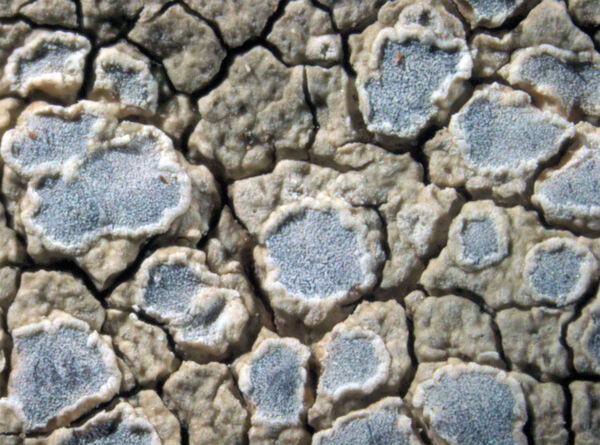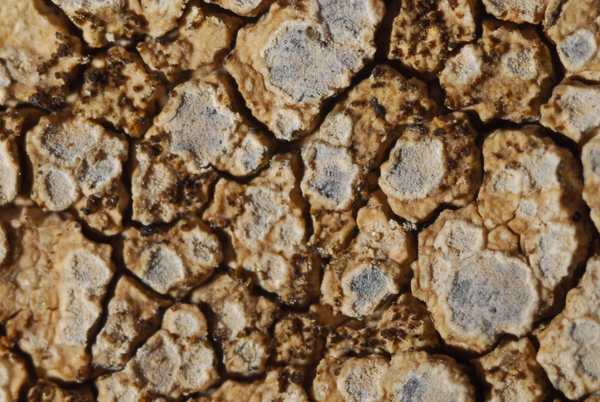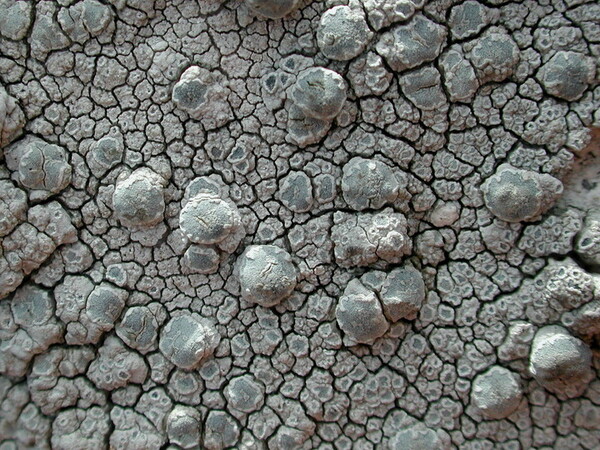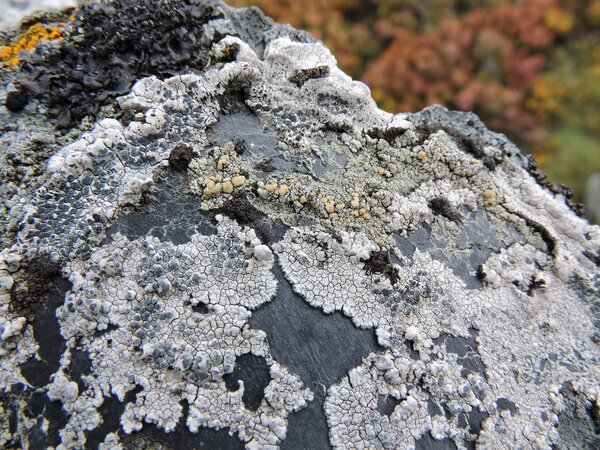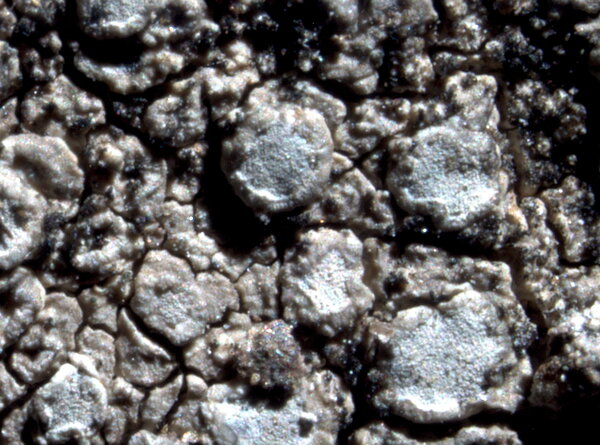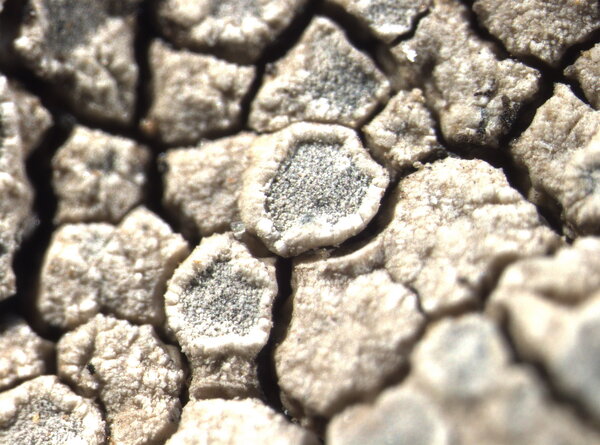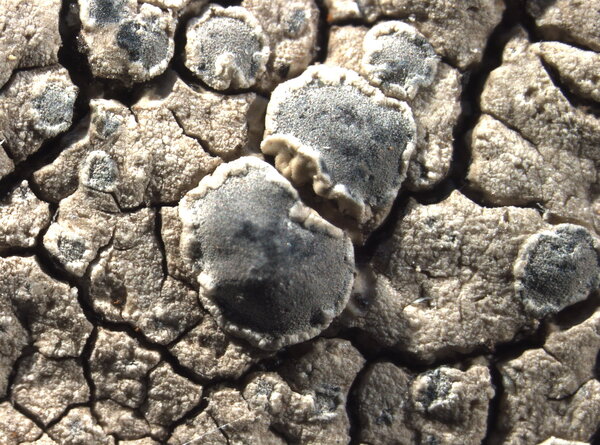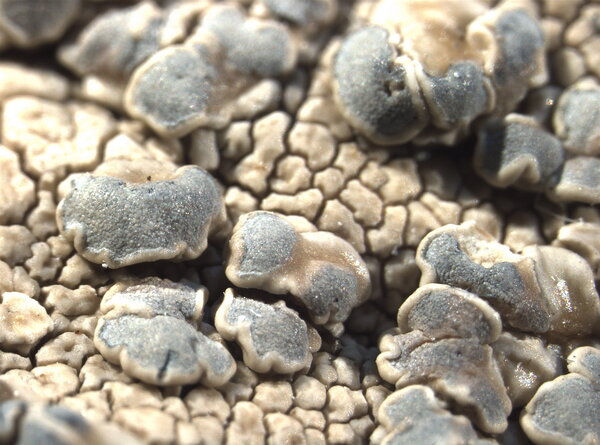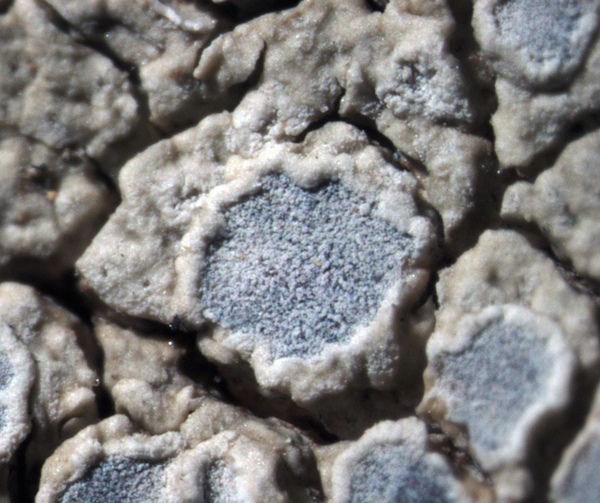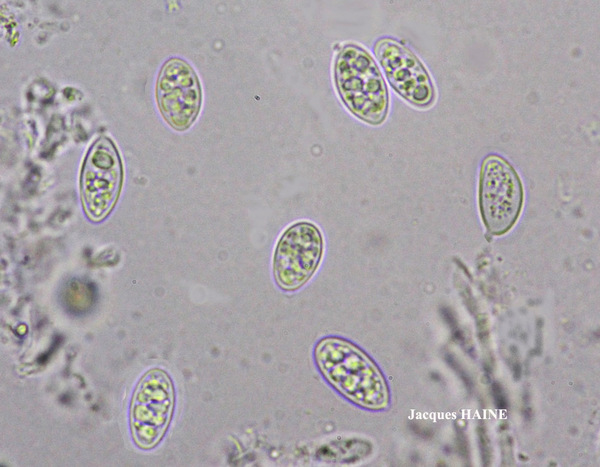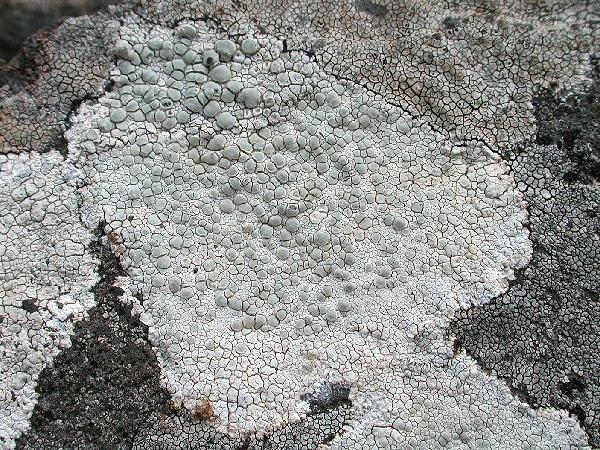Glaucomaria rupicola (L.) P.F. Cannon subsp. rupicola var. rupicola
in Cannon & al., Revisions of British and Irish Lichens, 25: 75, 2022. Basionym: Lichen rupicola L. - Mantissa Pl.: 132, 1767.
Synonyms: Lecanora glaucoma (Hoffm.) Ach.; Lecanora glaucoma f. scutellaris (Schaer.) H. Olivier; Lecanora leptoplaca Nyl.; Lecanora rimosa (Retz.) Röhl.; Lecanora rimosa f. gregaria A. Massal.; Lecanora rupicola (L.) Zahlbr. subsp. rupicola var. rupicola; Lecanora sordida (Pers.) Th. Fr.; Lecanora stenhammarii (Körb.) Jatta; Parmelia sordida (Pers.) Fr.
Distribution: N - Frl (Tretiach & Hafellner 2000), Ven (Lazzarin 2000b), TAA (Caniglia & al. 2002, Nascimbene 2003, 2006c, 2008b, Nascimbene & al. 2022), Lomb (Dalle Vedove & al. 2004), Piem (Morisi & Sereno 1995, Isocrono & Falletti 1999, Isocrono & al. 2003, 2004, Morisi 2005, Favero-Longo & al. 2005, 2006b, 2015, Giordani & al. 2014), VA (Borlandelli & al. 1996, Piervittori & Isocrono 1997, 1999, Piervittori & al. 2001, 2004), Emil (Dalle Vedove & al. 2002, Tretiach & al. 2008, Fariselli & al. 2020), Lig (Brunialti & al. 1999). C - Tosc (Tretiach & al. 2008, Brackel 2015), Umb (Panfili 2000, Ravera & al. 2006), Laz, Mol (Garofalo & al. 1999, Caporale & al. 2008), Sar (Monte 1993, Nöske 2000, Rizzi & al. 2011, Cossu & al. 2015, Neuwirth 2018, Brackel & Berger 2019). S - Camp (Garofalo & al. 1999, Aprile & al. 2002), Bas (Nimis & Tretiach 1999, Brackel & Puntillo 2023), Cal (Puntillo 1996, Brackel & Puntillo 2023), Si (Poli & al. 1995, Grillo & al. 1996, Ottonello & Romano 1997, Schicchi & al. 1997, Grillo 1998, Poli & Grillo 2000, Grillo & Caniglia 2004, Brackel 2008b, 2008c, Ottonello & al. 2011, Cataldo & Cannavò 2014, Campisi & al. 2020).
Description: Thallus crustose, episubstratic, finely rimose-areolate to slightly verrucose, whitish grey to ash-grey, sometimes delimited by a dark prothallus. Areoles flat, ecorticate, smooth, epruinose. Apothecia lecanorine, subimmersed when young, then broadly sessile, (0.5-)1-2(-3) mm across, with a brown, grey-brown or black (in forms parasitized by Arthonia varians), but heavily bluish-white-pruinose, usually flat disc, and a thin, persistent, smooth, sometimes flexuose thalline margin; proper margin not visible macroscopically. Thalline exciple pseudocorticate, with numerous algal cells, containing small crystals soluble in K; proper exciple thin, colourless, lacking crystals; epithecium almost colourless to yellowish or greenish brown, the pigment dissolving in K, with a layer of crystals dissolving in K and reacting C+ yellow; hymenium colourless, 75-95 µm high, not inspersed with oil droplets; paraphyses 2-3 µm thick, the apical cells not or slightly thickened, to 3.5 µm wide; hypothecium colourless. Asci 8-spored, elongate-clavate, very thin-walled, with a K/I+ blue, tall tholus penetrated by a faintly amyloid apical cushion, the wall K/I-, surrounded by a K/I+ blue outer layer, Lecanora-type. Ascospores 1-celled, hyaline, ellipsoid, 9-15 x 5-8 µm, the wall <1 µm thick. Pycnidia immersed, the wall colourless except around the ostiole. Conidia thread-like, sometimes curved, 14-25 µm long. Photobiont chlorococcoid. Spot tests: thallus K+ yellow, C-, KC-, P- or P+ pale yellow, UV+ white; apothecial disc C+ bright lemon-yellow, P-. Chemistry: thallus with atranorin (major), roccellic acid (major), chloroatranorin and eugenitol (minor); pruina of apothecia with sordidone (major).Note: a widespread, holarctic silicicolous lichen with a wide altitudinal range, rare only along the Adriatic side of the Peninsula, reaching the Mediterranean belt in Tyrrhenian Italy.
Growth form: Crustose
Substrata: rocks
Photobiont: green algae other than Trentepohlia
Reproductive strategy: mainly sexual
Commonnes-rarity: (info)
Alpine belt: extremely common
Subalpine belt: extremely common
Oromediterranean belt: common
Montane belt: very common
Submediterranean belt: rather rare
Padanian area: absent
Humid submediterranean belt: rather common
Humid mediterranean belt: very rare
Dry mediterranean belt: absent
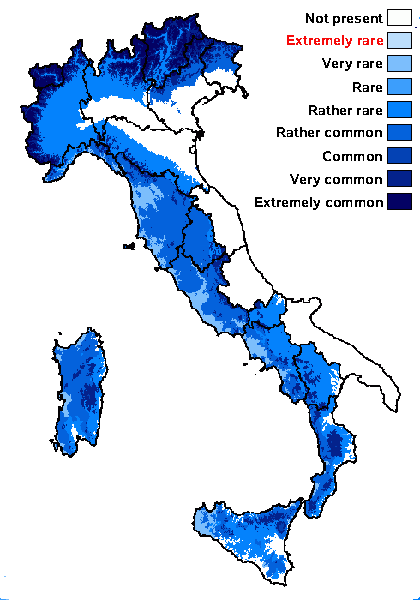
Predictive model
Herbarium samples
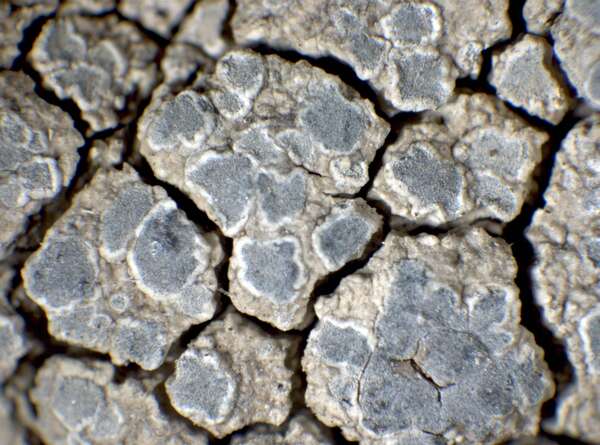

P.L. Nimis; Owner: Department of Life Sciences, University of Trieste
Herbarium: TSB (11622)
2001/11/26
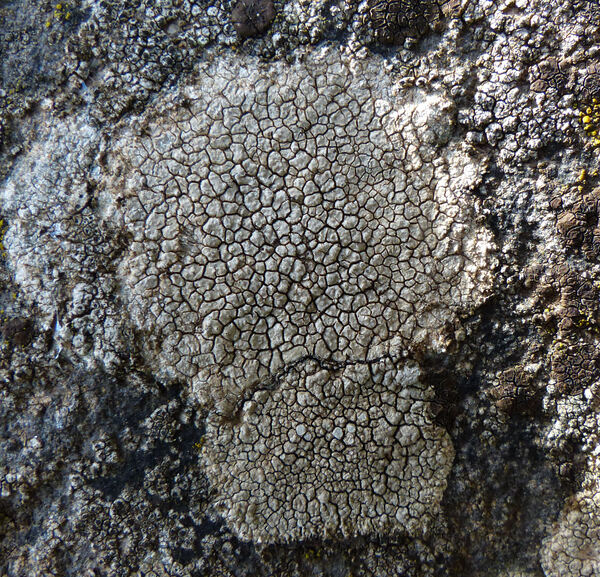

Andrea Moro; Owner: Department of Life Sciences, University of Trieste
Italy, Lazio, Roma, Ruines of ancient Tusculum, above Frascati
18/03/2017
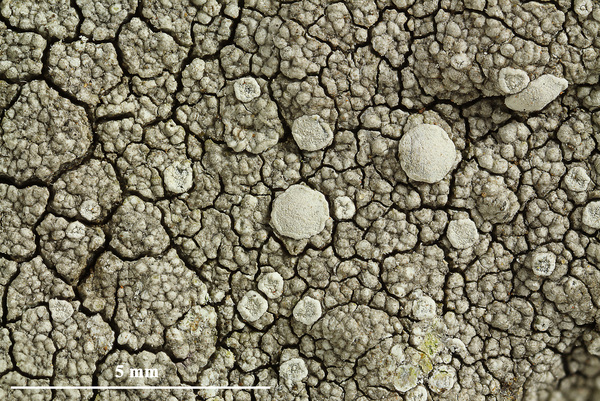

Felix Schumm – CC BY-SA 4.0
[19465], Germany, Hessen, Amöneburg bei Marburg, sonnige Basaltblöcke in einer Hangwiese kurz vor dem Ortseingang, 50.7896° N, 8.91995° E, 324 m. Leg. F. Schumm, 01.08.2016, det. F. Schumm.
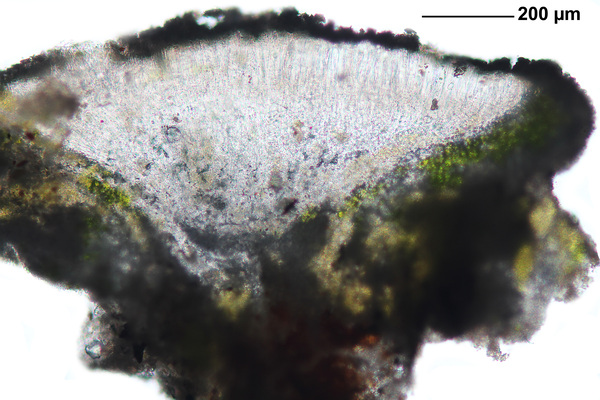

Felix Schumm – CC BY-SA 4.0
[19465], Germany, Hessen, Amöneburg bei Marburg, sonnige Basaltblöcke in einer Hangwiese kurz vor dem Ortseingang, 50.7896° N, 8.91995° E, 324 m. Leg. F. Schumm, 01.08.2016, det. F. Schumm.
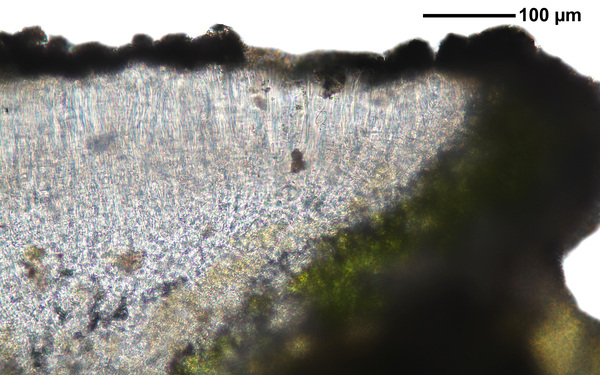

Felix Schumm – CC BY-SA 4.0
[19465], Germany, Hessen, Amöneburg bei Marburg, sonnige Basaltblöcke in einer Hangwiese kurz vor dem Ortseingang, 50.7896° N, 8.91995° E, 324 m. Leg. F. Schumm, 01.08.2016, det. F. Schumm.
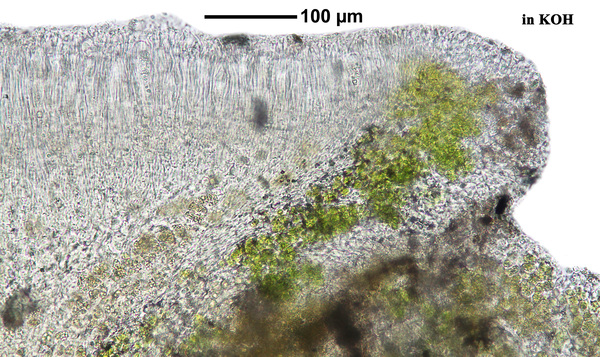

Felix Schumm – CC BY-SA 4.0
[19465], Germany, Hessen, Amöneburg bei Marburg, sonnige Basaltblöcke in einer Hangwiese kurz vor dem Ortseingang, 50.7896° N, 8.91995° E, 324 m. Leg. F. Schumm, 01.08.2016, det. F. Schumm.
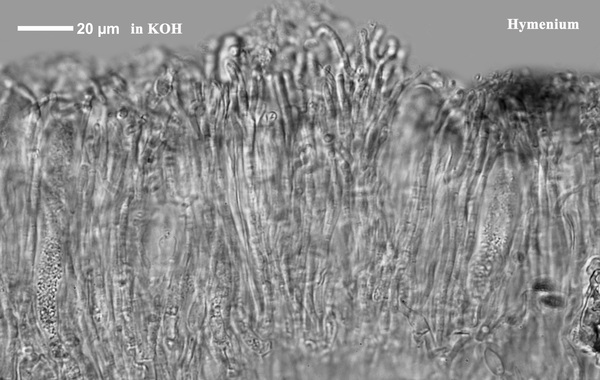

Felix Schumm – CC BY-SA 4.0
[19465], Germany, Hessen, Amöneburg bei Marburg, sonnige Basaltblöcke in einer Hangwiese kurz vor dem Ortseingang, 50.7896° N, 8.91995° E, 324 m. Leg. F. Schumm, 01.08.2016, det. F. Schumm.
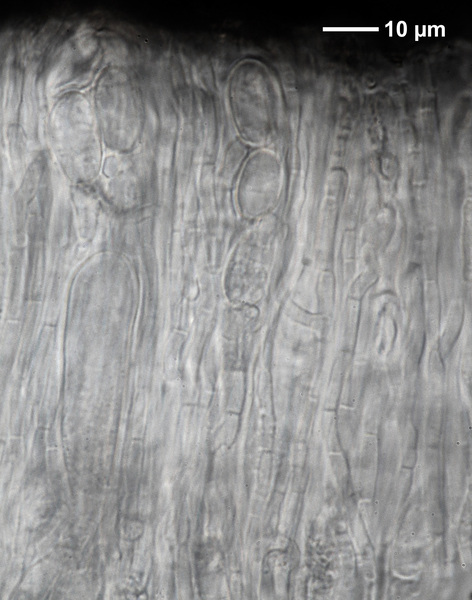

Felix Schumm – CC BY-SA 4.0
[19465], Germany, Hessen, Amöneburg bei Marburg, sonnige Basaltblöcke in einer Hangwiese kurz vor dem Ortseingang, 50.7896° N, 8.91995° E, 324 m. Leg. F. Schumm, 01.08.2016, det. F. Schumm.
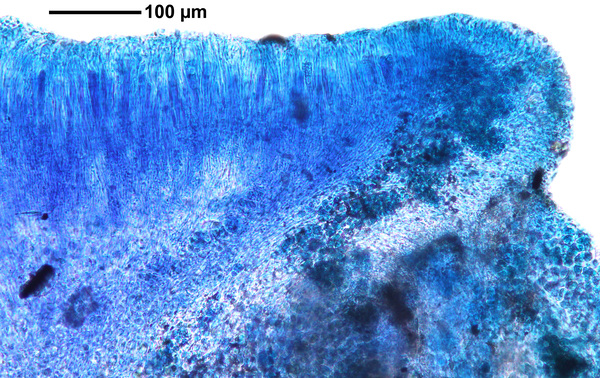

Felix Schumm – CC BY-SA 4.0
[19465], Germany, Hessen, Amöneburg bei Marburg, sonnige Basaltblöcke in einer Hangwiese kurz vor dem Ortseingang, 50.7896° N, 8.91995° E, 324 m. Leg. F. Schumm, 01.08.2016, det. F. Schumm.
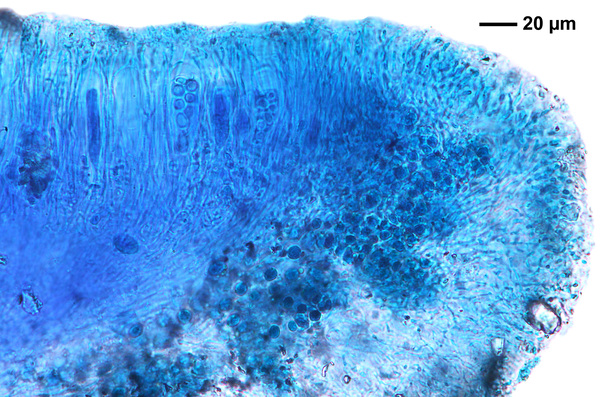

Felix Schumm – CC BY-SA 4.0
[19465], Germany, Hessen, Amöneburg bei Marburg, sonnige Basaltblöcke in einer Hangwiese kurz vor dem Ortseingang, 50.7896° N, 8.91995° E, 324 m. Leg. F. Schumm, 01.08.2016, det. F. Schumm.
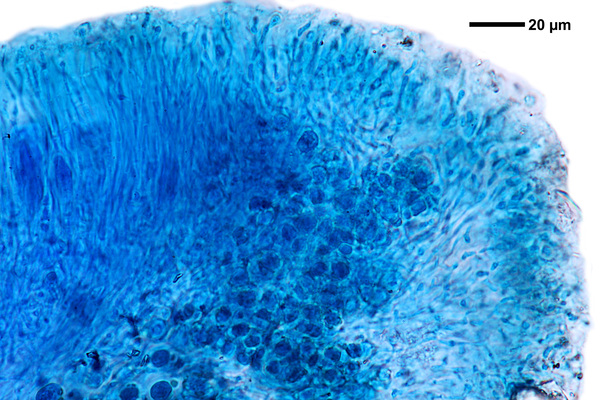

Felix Schumm – CC BY-SA 4.0
[19465], Germany, Hessen, Amöneburg bei Marburg, sonnige Basaltblöcke in einer Hangwiese kurz vor dem Ortseingang, 50.7896° N, 8.91995° E, 324 m. Leg. F. Schumm, 01.08.2016, det. F. Schumm.


Felix Schumm – CC BY-SA 4.0
[19465], Germany, Hessen, Amöneburg bei Marburg, sonnige Basaltblöcke in einer Hangwiese kurz vor dem Ortseingang, 50.7896° N, 8.91995° E, 324 m. Leg. F. Schumm, 01.08.2016, det. F. Schumm.
at: atranorin, so: sordidone, ro: roccellic acid, c: ? (position of skyrin)
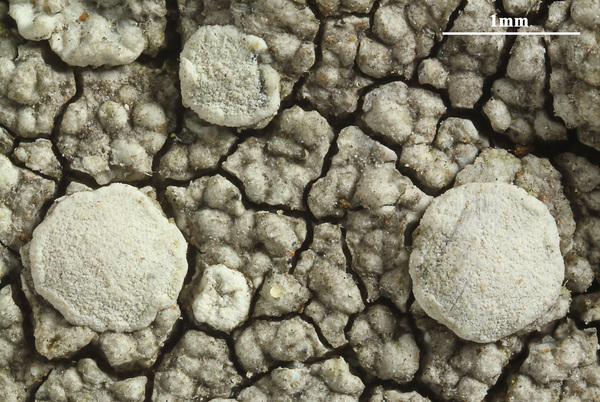

Felix Schumm – CC BY-SA 4.0
[19465], Germany, Hessen, Amöneburg bei Marburg, sonnige Basaltblöcke in einer Hangwiese kurz vor dem Ortseingang, 50.7896° N, 8.91995° E, 324 m. Leg. F. Schumm, 01.08.2016, det. F. Schumm.
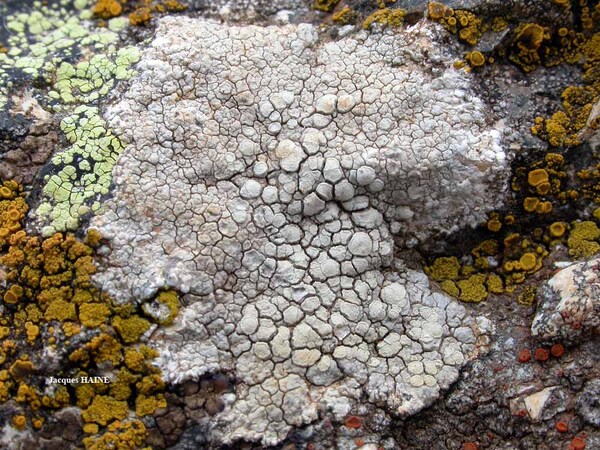
Jacques Haine - Source: http://www.lichensmaritimes.org/index.php?task=fiche&lichen=1044&lang=en
France, Ardennes

Jacques Haine - Source: http://www.lichensmaritimes.org/index.php?task=fiche&lichen=1044&lang=en
France, Roscanvel
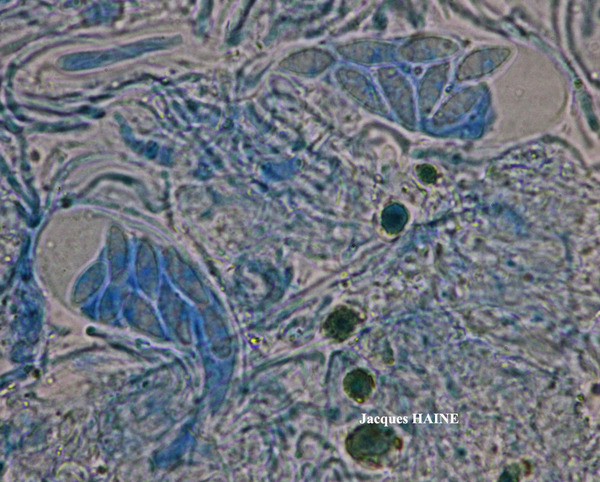
Jacques Haine - Source: http://www.lichensmaritimes.org/index.php?task=fiche&lichen=1044&lang=en
France, Roscanvel
Growth form: Crustose
Substrata: rocks
Photobiont: green algae other than Trentepohlia
Reproductive strategy: mainly sexual
Commonnes-rarity: (info)
Alpine belt: extremely common
Subalpine belt: extremely common
Oromediterranean belt: common
Montane belt: very common
Submediterranean belt: rather rare
Padanian area: absent
Humid submediterranean belt: rather common
Humid mediterranean belt: very rare
Dry mediterranean belt: absent

Predictive model
| Herbarium samples |


P.L. Nimis; Owner: Department of Life Sciences, University of Trieste
Herbarium: TSB (11622)
2001/11/26


Andrea Moro; Owner: Department of Life Sciences, University of Trieste
Italy, Lazio, Roma, Ruines of ancient Tusculum, above Frascati
18/03/2017


Felix Schumm – CC BY-SA 4.0
[19465], Germany, Hessen, Amöneburg bei Marburg, sonnige Basaltblöcke in einer Hangwiese kurz vor dem Ortseingang, 50.7896° N, 8.91995° E, 324 m. Leg. F. Schumm, 01.08.2016, det. F. Schumm.


Felix Schumm – CC BY-SA 4.0
[19465], Germany, Hessen, Amöneburg bei Marburg, sonnige Basaltblöcke in einer Hangwiese kurz vor dem Ortseingang, 50.7896° N, 8.91995° E, 324 m. Leg. F. Schumm, 01.08.2016, det. F. Schumm.


Felix Schumm – CC BY-SA 4.0
[19465], Germany, Hessen, Amöneburg bei Marburg, sonnige Basaltblöcke in einer Hangwiese kurz vor dem Ortseingang, 50.7896° N, 8.91995° E, 324 m. Leg. F. Schumm, 01.08.2016, det. F. Schumm.


Felix Schumm – CC BY-SA 4.0
[19465], Germany, Hessen, Amöneburg bei Marburg, sonnige Basaltblöcke in einer Hangwiese kurz vor dem Ortseingang, 50.7896° N, 8.91995° E, 324 m. Leg. F. Schumm, 01.08.2016, det. F. Schumm.


Felix Schumm – CC BY-SA 4.0
[19465], Germany, Hessen, Amöneburg bei Marburg, sonnige Basaltblöcke in einer Hangwiese kurz vor dem Ortseingang, 50.7896° N, 8.91995° E, 324 m. Leg. F. Schumm, 01.08.2016, det. F. Schumm.


Felix Schumm – CC BY-SA 4.0
[19465], Germany, Hessen, Amöneburg bei Marburg, sonnige Basaltblöcke in einer Hangwiese kurz vor dem Ortseingang, 50.7896° N, 8.91995° E, 324 m. Leg. F. Schumm, 01.08.2016, det. F. Schumm.


Felix Schumm – CC BY-SA 4.0
[19465], Germany, Hessen, Amöneburg bei Marburg, sonnige Basaltblöcke in einer Hangwiese kurz vor dem Ortseingang, 50.7896° N, 8.91995° E, 324 m. Leg. F. Schumm, 01.08.2016, det. F. Schumm.


Felix Schumm – CC BY-SA 4.0
[19465], Germany, Hessen, Amöneburg bei Marburg, sonnige Basaltblöcke in einer Hangwiese kurz vor dem Ortseingang, 50.7896° N, 8.91995° E, 324 m. Leg. F. Schumm, 01.08.2016, det. F. Schumm.


Felix Schumm – CC BY-SA 4.0
[19465], Germany, Hessen, Amöneburg bei Marburg, sonnige Basaltblöcke in einer Hangwiese kurz vor dem Ortseingang, 50.7896° N, 8.91995° E, 324 m. Leg. F. Schumm, 01.08.2016, det. F. Schumm.


Felix Schumm – CC BY-SA 4.0
[19465], Germany, Hessen, Amöneburg bei Marburg, sonnige Basaltblöcke in einer Hangwiese kurz vor dem Ortseingang, 50.7896° N, 8.91995° E, 324 m. Leg. F. Schumm, 01.08.2016, det. F. Schumm.
at: atranorin, so: sordidone, ro: roccellic acid, c: ? (position of skyrin)


Felix Schumm – CC BY-SA 4.0
[19465], Germany, Hessen, Amöneburg bei Marburg, sonnige Basaltblöcke in einer Hangwiese kurz vor dem Ortseingang, 50.7896° N, 8.91995° E, 324 m. Leg. F. Schumm, 01.08.2016, det. F. Schumm.

Jacques Haine - Source: http://www.lichensmaritimes.org/index.php?task=fiche&lichen=1044&lang=en
France, Ardennes

Jacques Haine - Source: http://www.lichensmaritimes.org/index.php?task=fiche&lichen=1044&lang=en
France, Roscanvel

